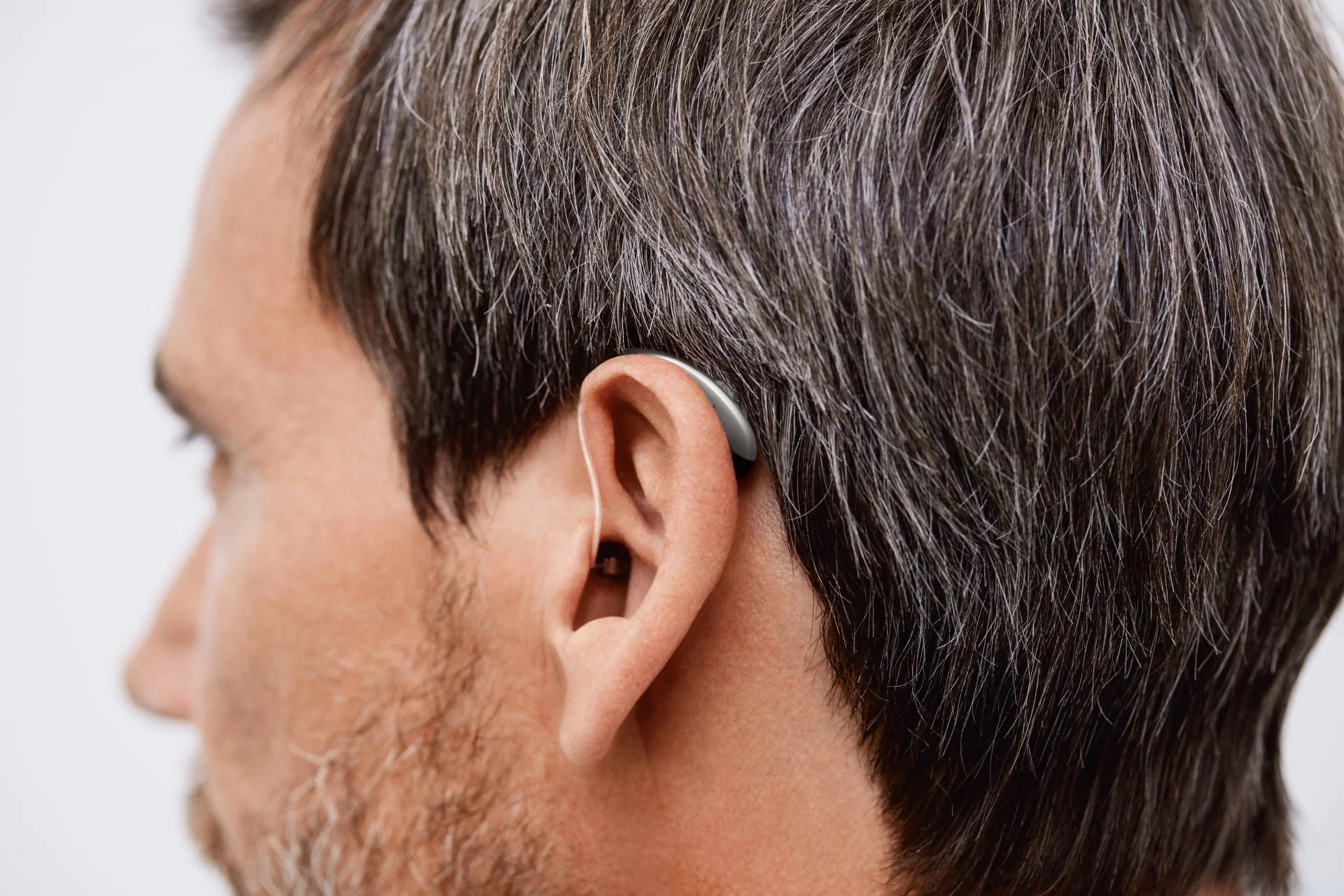
The pervasive phantom sound, often described as a ringing, buzzing, hissing, or roaring, that characterizes tinnitus, can transform the experience of daily life for millions of individuals. This internal sound, existing without an external acoustic source, frequently coexists with some degree of hearing impairment, which suggests a profound, non-linear relationship between peripheral auditory function and central nervous system adaptation. The auditory system, when deprived of expected external input due to hearing loss, appears to undergo a series of compensatory neuroplastic changes. It is within this complex interplay of sensory deprivation and neural reorganization that the potential role of hearing aids in alleviating tinnitus symptoms is situated, moving beyond their traditional function of merely augmenting external sound. The question is not simply whether they mask the sound—though that is a component—but how they fundamentally influence the brain’s processing of sound and silence.
The Auditory-Neural Basis of the Phantom Sound Experience
The genesis of subjective tinnitus is still not definitively pinned down to a single mechanism, which underscores the difficulty in establishing a universal cure. A prominent theory posits that peripheral damage, such as to the outer hair cells in the cochlea, leads to a reduction or alteration in the neural signals sent from the ear to the brain. This sensory deprivation is thought to trigger a compensatory ‘up-regulation’ of neural gain in the central auditory pathways—the brain essentially cranks up the volume dial to detect any input. The result of this maladaptive plasticity is the spontaneous, uncontrolled neural activity that the individual perceives as the persistent phantom sound. Consequently, the use of a device designed to restore, even partially, the missing external auditory input presents a compelling, mechanistically sound initial approach to management, particularly when hearing loss is a confirmed comorbidity. The intervention is aimed at the source of the brain’s overcompensation rather than just the symptom.
Restoring the Spectrum of External Auditory Stimulation
The most immediate and fundamental action of a hearing aid is the amplification of external sounds, a function that directly addresses the core issue of auditory deprivation. “Restoring the Spectrum of External Auditory Stimulation” is crucial because, in many cases, the incessant noise of tinnitus becomes most pronounced in environments of relative quiet, where the brain’s amplified internal signal lacks sufficient competition from the outside world. By increasing the audibility of ambient environmental sounds, conversations, and other acoustic stimuli, a hearing aid reduces the perceptual contrast between the internal tinnitus sound and the external soundscape. This action effectively dilutes the salience of the tinnitus signal, making it less intrusive and less likely to monopolize the listener’s attention. Research has consistently indicated that this simple act of amplification can significantly reduce the perceived loudness and overall annoyance of the tinnitus for a large subset of users who experience concurrent hearing loss. It is a rebalancing of the internal and external auditory world.
The Mechanism of Partial Auditory Masking and Its Effects
While complete masking, where the tinnitus sound is entirely drowned out, is sometimes achieved, the mechanism often leveraged by hearing aids is actually a partial, or residual, masking effect. “The Mechanism of Partial Auditory Masking and Its Effects” refers to the phenomenon where the introduction of amplified sound reduces the perceived intensity of the tinnitus without completely obscuring it. The external sound provides a more compelling auditory stimulus for the brain to process, effectively drawing neural resources and attention away from the aberrant internal signal. This is a subtle yet profound shift in cognitive resources. Furthermore, the partial masking can be a psychological relief; the awareness that the phantom sound is still present but subdued by a gentle, natural acoustic backdrop can lessen the emotional and psychological distress associated with its constant presence. This effect moves beyond simple amplification and taps into the brain’s attentional filtering mechanisms, aiding in habituation.
Combination Devices: Integrating Amplification with Tinnitus Sound Generators
Modern advances in audiological technology have led to the development of combination hearing aids, which integrate both traditional sound amplification and dedicated tinnitus sound generation capabilities within a single, discreet device. “Combination Devices: Integrating Amplification with Tinnitus Sound Generators” allows for a highly customized, dual-action therapeutic approach. These built-in sound generators can emit specific types of sounds—such as broadband noise (white, pink, or brown noise), nature sounds (like ocean waves or rainfall), or even spectrally modified music. The rationale behind using these specialized sounds is twofold: they provide a customizable, non-intrusive background sound that can be set to a level just slightly above the tinnitus perception threshold, and they are an essential component of formal sound therapy approaches like Tinnitus Retraining Therapy (TRT). The ability to finely tune the spectral characteristics, intensity, and modulation of the sound generator, often through a linked smartphone application, offers the audiologist a powerful tool for personalization, ensuring the acoustic therapy is optimally suited to the individual’s specific tinnitus frequency and hearing profile.
Facilitating Central Auditory System Reprogramming
The enduring benefit of hearing aid use often lies in its capacity to facilitate what is often termed ‘neural plasticity’ or the central auditory system’s ability to reorganize and adapt. “Facilitating Central Auditory System Reprogramming” suggests that consistent, appropriately fitted sound input can counteract the maladaptive gain adjustment that initiated the tinnitus in the first place. By restoring the brain’s expected level of peripheral stimulation across the damaged frequency regions, the hearing aid may encourage the central auditory pathways to “turn down” the internal volume dial over an extended period. This long-term change is the goal of true tinnitus management: shifting from constant awareness of the internal sound to a state of habituation, where the brain classifies the tinnitus as irrelevant background noise, effectively pushing it below the threshold of conscious perception. This neuroplastic change is often gradual, underscoring the necessity of consistent, all-day device wear for optimal long-term outcomes.
Addressing the Confounding Variable of Stress and Listening Fatigue
Tinnitus is known to exacerbate feelings of stress, anxiety, and frustration, which can, in a vicious cycle, intensify the perception of the tinnitus itself. The effort required to constantly strain to hear in the presence of hearing loss—a condition often termed ‘listening fatigue’—is a significant contributor to this stress. “Addressing the Confounding Variable of Stress and Listening Fatigue” highlights a major, often underappreciated, indirect benefit of hearing aids. By improving the clarity and audibility of speech and environmental sounds, hearing aids reduce the cognitive load and emotional burden associated with communication in challenging acoustic environments. A reduction in listening effort translates directly into a decrease in overall physiological stress, which can lead to a demonstrable lowering of tinnitus severity. This non-auditory benefit demonstrates how the management of hearing loss is inextricably linked to the successful management of tinnitus-related distress.
The Critical Importance of Objective Verification in Device Fitting
The difference between a moderately helpful device and a truly transformative one often rests on the precision of the initial fitting and programming. “The Critical Importance of Objective Verification in Device Fitting” cannot be overstated. Unlike a generalized solution, an effective hearing aid fitting for tinnitus requires a meticulous approach, including Real-Ear Measurements (REM) to objectively verify that the amplification levels and frequency-specific gain are delivered accurately at the eardrum. Studies have shown that a verified, precision fitting can lead to a significantly greater reduction in tinnitus-related distress compared to fittings done without such objective verification. The goal is to maximize the compensation for the hearing loss while ensuring the amplified sound does not inadvertently become a source of irritation or overstimulation, which could potentially worsen the tinnitus perception.
Nuances in Unilateral Versus Bilateral Hearing Aid Application
For individuals with bilateral hearing loss and bilateral tinnitus, the recommendation for bilateral hearing aid use is straightforward. However, the scenario for unilateral tinnitus or asymmetrical hearing loss introduces important clinical subtleties. “Nuances in Unilateral Versus Bilateral Hearing Aid Application” must be carefully considered. Clinical experience and some research suggest that even in cases of unilateral tinnitus where hearing loss is mild or only present in one ear, a bilateral fitting can still be more beneficial. The reasoning is tied to the brain’s central processing: providing a balanced, enriched acoustic environment to both auditory pathways may be more effective in normalizing central gain and promoting habituation across the entire auditory cortex, potentially preventing the ‘shift’ of tinnitus awareness to the unaided ear. The ultimate decision requires a detailed assessment of the individual’s auditory profile and the lateralization of their phantom sound.
Distinguishing Short-Term Masking from Long-Term Therapeutic Habituation
It is vital for the patient to understand that the initial sense of relief provided by a hearing aid’s sound is only the first step in a longer therapeutic process. “Distinguishing Short-Term Masking from Long-Term Therapeutic Habituation” manages expectations and defines success more accurately. The immediate benefit, the reduction of contrast or simple partial masking, is temporary relief. The true, enduring therapeutic goal, particularly when the hearing aid is used as part of a Tinnitus Retraining Therapy (TRT) or similar counseling-based approach, is habituation. Habituation is a neurophysiological process where the brain learns to ignore the tinnitus signal over time, reducing not only its perceived loudness but, more importantly, the associated annoyance and emotional reaction. The hearing aid is an acoustic delivery tool—a crucial element—but the long-term success hinges on the brain’s ability to adapt, a process that is supported and reinforced through consistent sound therapy and directive counseling.
The Ongoing Need for Rigorous, Standardized Clinical Trials
While a wealth of clinical experience and numerous studies support the use of hearing aids for tinnitus relief, particularly in cases of co-occurring hearing loss, the scientific community continues to advocate for more robust, high-level evidence. “The Ongoing Need for Rigorous, Standardized Clinical Trials” stems from the inherent variability in tinnitus etiology, presentation, and patient response. The current body of literature, while largely positive, is often characterized by heterogeneity in study design, outcome measures, and patient populations. Future research needs to focus on standardized methodologies, particularly randomized controlled trials, to isolate the specific effect of amplification alone versus combination devices, and to better define predictive factors that determine which specific acoustic strategies will yield the greatest benefit for a given patient profile. This pursuit of stronger evidence is key to moving the intervention from a common clinical practice to an unequivocally evidence-based, first-line standard of care.
Individualized Response as the Cornerstone of Tinnitus Management
Ultimately, the effectiveness of hearing aids in alleviating the symptoms of tinnitus is highly individualized. While the mechanical and neural rationales for their use are sound, and clinical outcomes are generally favorable, no single device or setting offers a guaranteed solution for every individual. “Individualized Response as the Cornerstone of Tinnitus Management” reflects the reality that tinnitus is a deeply personal and complex auditory perception. Success is achieved through a comprehensive, multidisciplinary approach that starts with an accurate audiological and tinnitus assessment, is followed by the precision fitting of a device (often a combination model), and is sustained through ongoing audiological counseling and support. The hearing aid is not a cure, but for a substantial majority of individuals with co-existing hearing loss, it is an indispensable element in the journey toward significantly reducing the impact of the phantom sound and regaining control over their auditory life.
